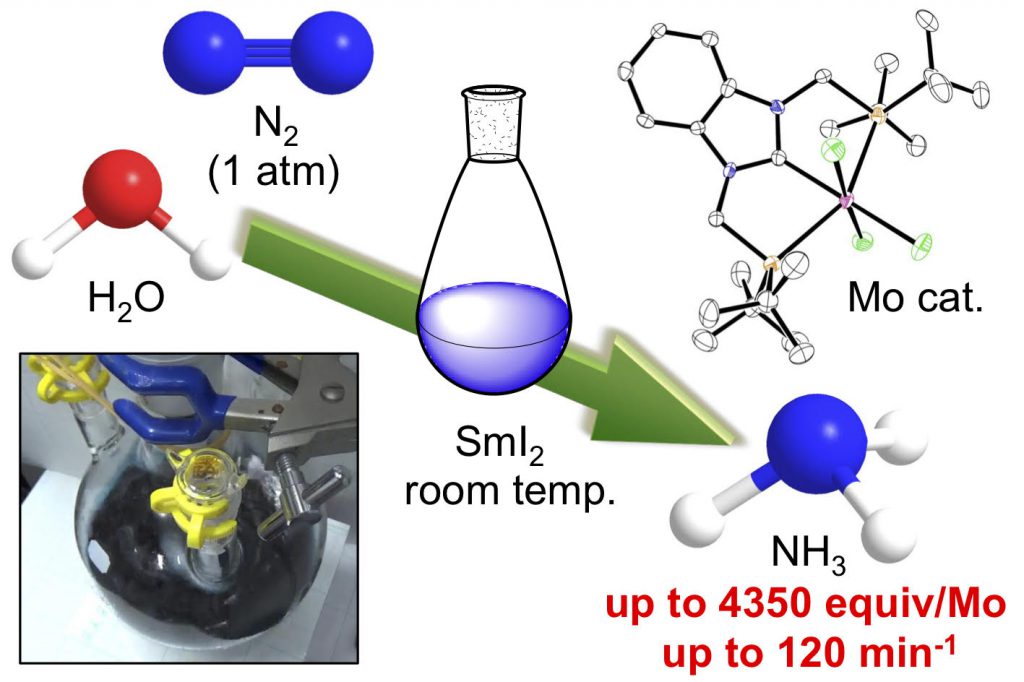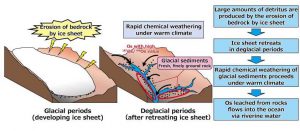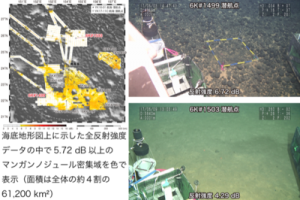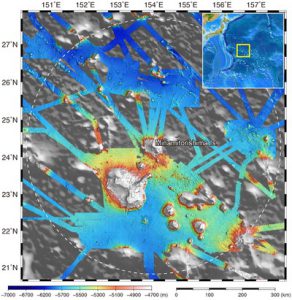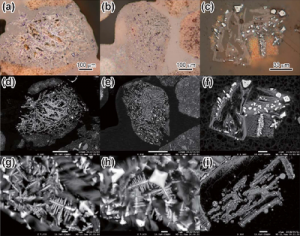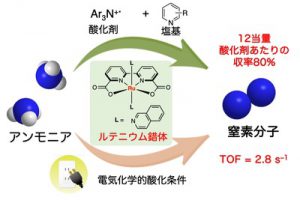【Press release】Project Lecturer Hiroki Sakaji has been selected for the 2022 JST PRESTO “Social transformation platform”.
【Press release】Kazuki SHIBANUMA, Associate Professor, was selected for the 2021 JST PRESTO “Nano Mechanics” New Project.
【Press release】Kazuki SHIBANUMA, Associate Professor, was selected for the 2021 JST PRESTO “Nano Mechanics” New Project.
The Japan Science and Technology Agency (JST) has decided on newly selected principal investigators / researchers and research subjects in the 2021 research proposal recruitment of the Strategic Creative Research Promotion Project and the research theme of Kazuki Shibanuma, Associate Professor, has been adopted.
Strategic goal:「ナノスケールの動的挙動の理解に基づく力学特性発現機構の解明」
Research area:「力学機能のナノエンジニアリング」
Research Summary:北村 隆行(京都大学 理事・副学長)Takayuki Kitamura (Director / Vice President, Kyoto University)
Name::Kazuki SHIBANUMA
Institution:The University of Tokyo, Department of Engineering,
Position:Associate Professor,
Research subject:Multiscale physics in creep damage at high-temperature
Research period:October 2021 – March 2025
List of adopted projects:
https://www.jst.go.jp/kisoken/presto/application/2021/210921/210921presto.pdf#page=25
PRESTO (Precursory Research for Embryonic Science and Technology) of JST aims to promote fundamental research in fields where a strategic focus of the nation has been placed for generating new innovative technology that leads to the developments of scientific technologies. In PRESTO, under the management of Research Supervisors, JST promotes the independent research of individuals through advice from a Research Supervisor and Area Advisors, providing a place for exchanges among various researchers involved in the same fields of research.
The research area of “Nanoengineering on Mechanical Functions of Materials”, where Prof. Shibanuma has been adopted, aims at the establishment of principles in designing materials of high performance by understanding the mechanisms and mechanics/dynamics of mechanical properties on the nanoscale in order to realise super-smart, sustainable, and well-provided societies. This leads to the eminent advancement of mechanical functions and creation of new functions (nanoengineering) in facilities and devices.
【Press release】Rapid coupling between solid earth and ice volume during the Quaternary: Yusuke Kuwahara (D1), Department of Systems Innovation, and Professor Yasuhiro Kato, Frontier Research Center for Energy and Resources/Department of Systems Innovation, and other researchers
【Press release】Rapid coupling between solid earth and ice volume during the Quaternary: Yusuke Kuwahara (D1), Department of Systems Innovation, and Professor Yasuhiro Kato, Frontier Research Center for Energy and Resources/Department of Systems Innovation, and other researchers
Rapid coupling between solid earth and ice volume during the Quaternary: Yusuke Kuwahara (1st year of the doctoral course), Kazutaka Yasukawa (Lecturer), Koichiro Fujinaga (Researcher), Junichiro Ohta (Assistant Professor), Kentaro Nakamura (Associate Professor), Yasuhiro Kato (Professor) and other researchers.
The solid earth plays a major role in controlling Earth’s surface climate. Volcanic degassing of carbon dioxide (CO2) and silicate chemical weathering are known to regulate the evolution of climate on a geologic timescale (> 106 yr), but the relationship between the solid earth and the shorter (< 105 yr) fluctuations of Quaternary glacial–interglacial cycles is still under debate. Here we show that the seawater osmium isotope composition (187Os/188Os), a proxy for the solid earth’s response to climate change, has varied during the past 300,000 years in association with glacial–interglacial cycles. Our marine Os isotope mass-balance simulation reveals that the observed 187Os/188Os fluctuation cannot be explained solely by global chemical weathering rate changes corresponding to glacial–interglacial climate changes, but the fluctuation can be reproduced by taking account of short-term inputs of (1) radiogenic Os derived from intense weathering of glacial till during deglacial periods and (2) unradiogenic Os derived from enhanced seafloor hydrothermalism triggered by sea-level falls associated with increases of ice sheet volume. Our results constitute the first evidence that ice sheet recession and expansion during the Quaternary systematically and repetitively caused short-term (< 105 yr) solid earth responses via chemical weathering of glacial till and seafloor magmatism. This finding implies that climatic changes on < 105 yr timescales can provoke rapid feedbacks from the solid earth, a causal relationship that is the reverse of the longer-term (> 106 yr) causality that has been conventionally considered.
https://www.t.u-tokyo.ac.jp/soee/press/setnws_202103112237172355701573.html
Scientific Reports:
https://www.nature.com/articles/s41598-021-84448-7
【Press release】Fish proliferation and rare-earth deposition by topographically induced upwelling at the late Eocene cooling event
【Press release】Fish proliferation and rare-earth deposition by topographically induced upwelling at the late Eocene cooling event
Name: Junichiro Ohta, Kazutaka Yasukawa, Kazuhide Mimura, Koichiro Fujinaga, Kentaro Nakamura, Yasuhiro Kato
Abstract:
The deep-sea clay that covers wide areas of the pelagic ocean bottom provides key information about open-ocean environments but lacks age-diagnostic calcareous or siliceous microfossils. The marine osmium isotope record has varied in response to environmental changes and can therefore be a useful stratigraphic marker. In this study, we used osmium isotope ratios to determine the depositional ages of pelagic clays extraordinarily rich in fish debris. Much fish debris was deposited in the western North and central South Pacific sites roughly 34.4 million years ago, concurrent with a late Eocene event, a temporal expansion of Antarctic ice preceding the Eocene–Oligocene climate transition. The enhanced northward flow of bottom water formed around Antarctica probably caused upwelling of deep-ocean nutrients at topographic highs and stimulated biological productivity that resulted in the proliferation of fish in pelagic realms. The abundant fish debris is now a highly concentrated source of industrially critical rare-earth elements.
http://www.t.u-tokyo.ac.jp/soee/press/setnws_202006191133419291184890.html
【Press Releases】Visualisation method for the broad distribution of seafloor ferromanganese deposits: Lecturer Kazutaka Yasukawa, Professor Yasuhiro Kato, Frontier Research Center for Energy and Resources, and other researchers
【Press Releases】Visualisation method for the broad distribution of seafloor ferromanganese deposits: Lecturer Kazutaka Yasukawa, Professor Yasuhiro Kato, Frontier Research Center for Energy and Resources, and other researchers
http://www.t.u-tokyo.ac.jp/soee/press/setnws_201912112002546089424844.html
The increasing global demand for industrially critical metals has driven the development of deep-sea mineral resources. In the past, acoustic exploration has been utilised as an efficient technique for investigating deep-sea mineral resources. However, a practical method applicable to a wide distribution of resources has not yet been established. We show that the acoustic backscatter intensity of the seafloor determined using a vessel-equipped multi-narrow beam echo sounder provides an inherent threshold that bounds different types of geology, e.g. barren pelagic sediment and dense ferromanganese nodules. We found that multiple datasets from different sounders and/or the observation periods could be integrated on the basis of the thresholds that indicate the same geological boundaries. Furthermore, the integrated data and threshold provided visualisation and quantitative estimations regarding the distribution of ferromanganese deposits covering thousands of square kilometres. Our method is applicable after minimal data processing and ground-truth observations, and provides expeditious and exhaustive reconnaissance exploration.
Marine Georesources & Geotechnology:
https://www.tandfonline.com/doi/full/10.1080/1064119X.2019.1696432
【Press Releases】A Miocene impact ejecta layer in the pelagic Pacific Ocean : Lecturer Kazutaka Yasukawa, Professor Yasuhiro Kato, Frontier Research Center for Energy and Resources, and other researchers.
A Miocene impact ejecta layer in the pelagic Pacific Ocean : Lecturer Kazutaka Yasukawa, Professor Yasuhiro Kato, Frontier Research Center for Energy and Resources, and other researchers.
Meteorite impacts have caused catastrophic perturbations to the global environment and mass extinctions throughout the Earth’s history. Here, we present petrographic and geochemical evidence of a possible impact ejecta layer, dating from about 11 Ma, in deep-sea clayey sediment in the Northwest Pacific. This clay layer has high platinum group element (PGE) concentrations and features a conspicuous negative Os isotope anomaly (187Os/188Os as low as ~0.2), indicating an influx of extraterrestrial material. It also contains abundant spherules that include pseudomorphs suggestive of porphyritic olivine as well as spinel grains with euhedral, dendritic and spherical forms and NiO contents as great as 23.3 wt%, consistent with impact ejecta. Osmium isotope stratigraphy suggests a most plausible depositional age of ~11 Ma (Miocene) for this layer, as determined by fitting with the seawater evolution curve. No large impact crater of this age is known on land, even within the relatively large uncertainty range of the relative Os age. Thus, we suggest that an unrecognised impact event in the middle or late Miocene produced the impact ejecta layer of the Northwest Pacific.
Scientific Reports:
https://www.nature.com/articles/s41598-019-52709-1
References
Press Releases:
https://www.t.u-tokyo.ac.jp/…/setnws_2019112111235657315787…
JAMSTEC:
http://www.jamstec.go.jp/j/about/press_release/20191120/
Tokyo Institute of Technology :
https://www.titech.ac.jp/news/2019/045695.html
KYUSHU UNIVERSITY :
https://www.kyushu-u.ac.jp/ja/researches/view/397
NIKKEI, Inc:
https://www.nikkei.com/article/DGXLRSP523673_Z11C19A1000000/
【Press Releases】Ruthenium-catalysed oxidative conversion of ammonia into dinitrogen:Associate Professor Kazunari Nakajima, Frontier Research Center for Energy and Resources, Hiroki Toda (D1) and Professor Yoshiaki Nishibayashi, Department of Systems Innovation, and other researchers.
【Press Releases】Ruthenium-catalysed oxidative conversion of ammonia into dinitrogen:Associate Professor Kazunari Nakajima, Frontier Research Center for Energy and Resources, Hiroki Toda (D1) and Professor Yoshiaki Nishibayashi, Department of Systems Innovation, and other researchers.
Ruthenium-catalysed oxidative conversion of ammonia into dinitrogen:Associate Professor Kazunari Nakajima, Frontier Research Center for Energy and Resources, Hiroki Toda (D1) and Professor Yoshiaki Nishibayashi, Department of Systems Innovation, and other researchers. Conversion of ammonia into dinitrogen has attracted broad scientific interest in relation to molecular models of the heterogeneous nitrogen fixation process, environmental treatment for denitrification and utilization of ammonia as an energy carrier. Here we show that some ruthenium complexes bearing 2,2′-bipyridyl-6,6′-dicarboxylate ligands work as catalysts for the ammonia oxidation reaction. Production of dinitrogen is observed when ammonium salts are treated with a triarylaminium radical as an oxidant and 2,4,6-collidine as a base in the presence of the ruthenium catalysts. Based on the characterization of some intermediates, we propose a reaction pathway via a bimetallic nitride–nitride coupling process. The proposed reaction pathway is supported by density functional theory calculations. Further investigation of the ammonia oxidation reaction under the electrochemical conditions revealed that the ruthenium complex works as a new anode catalyst for ammonia oxidation.
References: School of Engineering, The University of Tokyo
https://www.t.u-tokyo.ac.jp/soee/press/setnws_201907251112498019862589.html
Nature Chemistry:
https://www.nature.com/articles/s41557-019-0293-y
Nature Research Chemistry Community:
https://chemistrycommunity.nature.com/users/265564-yoshiaki-nishibayashi/posts/51239-for-nature-research-chemistry-communit
【Press releases】Molybdenum-catalyzed ammonia production with samarium diiodide and alcohols or water:Yuya Ashida(D2), Professor Yoshiaki Nishibayashi, Department of Systems Innovation, and other researchers.
Molybdenum-catalyzed ammonia production with samarium diiodide and alcohols or water:Yuya Ashida(D2), Professor Yoshiaki Nishibayashi, Department of Systems Innovation, and other researchers.
The production of ammonia from nitrogen gas is one of the most important industrial processes, owing to the use of ammonia as a raw material for nitrogen fertilizers. Currently, the main method of ammonia production is the Haber–Bosch process, which operates under very high temperatures and pressures and is therefore very energy-intensive. The transition-metal-catalysed reduction of nitrogen gas is an alternative method for the formation of ammonia. In these reaction systems, metallocenes or potassium graphite are typically used as the reducing reagent, and conjugate acids of pyridines or related compounds are used as a proton source. To develop a next-generation nitrogen-fixation system, these reagents should be low cost, readily available and environmentally friendly. Here we show that the combination of samarium(II) diiodide (SmI2) with alcohols or water enables the fixation of nitrogen to be catalysed by molybdenum complexes under ambient conditions. Up to 4,350 equivalents of ammonia can be produced (based on the molybdenum catalyst), with a turnover frequency of around 117 per minute. The amount of ammonia produced and its rate of formation are one and two orders of magnitude larger, respectively, than those achieved in artificial reaction systems reported so far, and the formation rate approaches that observed with nitrogenase enzymes. The high reactivity is achieved by a proton-coupled electron-transfer process that is enabled by weakening of the O–H bonds of alcohols and water coordinated to SmI2. Although the current reaction is not suitable for use on an industrial scale, this work demonstrates an opportunity for further research into catalytic nitrogen fixation.
